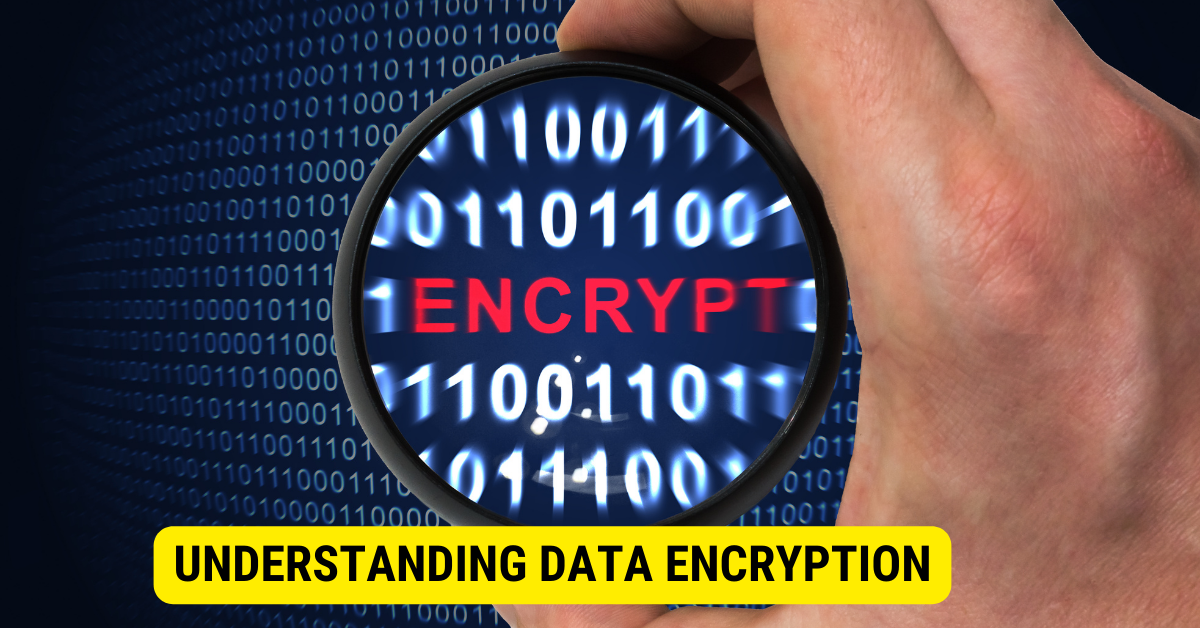Understanding Data Encryption

Data encryption is the process of transforming information into an unreadable form using cryptographic algorithms. To encrypt data, use encryption algorithms and keys to transform the information into an unreadable form that can only be decrypted with the correct decryption key. This ensures that even if unauthorized individuals gain access to the encrypted data, they cannot decipher it without the corresponding decryption key. Encrypting data is a vital step in protecting your sensitive information from potential breaches and unauthorized access.
Principle Of Encryption
Encryption operates on the principle of converting plain, understandable data (referred to as plaintext) into an encoded, unreadable format (known as ciphertext). The ciphertext can only be converted back into plaintext by using the correct decryption key. By employing encryption techniques, you can safeguard your personal and confidential information, such as financial data, passwords, and sensitive business information, from prying eyes.
Why Is Data Encryption Important?
Data encryption is important because it ensures the confidentiality and integrity of sensitive information, protecting it from unauthorized access and cyber threats.
Encrypting Data: Step-by-Step Guide
Choosing a Reliable Encryption Algorithm
- Select a widely recognized encryption algorithm such as AES, RSA, or Blowfish.
- Ensure the algorithm has been thoroughly tested and is resistant to known attacks.
Generating Strong Encryption Keys
- Use a trusted random number generator to generate long and complex encryption keys.
- Strike a balance between key length and practicality, considering both security and performance.
Selecting the Right Encryption Software
- Choose reputable encryption software that provides a user-friendly interface, robust encryption algorithms, and regular security updates.
- Consider compatibility with your operating system and the ability to encrypt different types of files.
Encrypting Files and Folders
- Open your encryption software and follow the provided instructions.
- Select the files or folders you want to encrypt.
- Specify the encryption algorithm and key.
- Set a strong password to protect the encrypted data.
Encrypting Emails and Communication
- Use email encryption tools or services to encrypt the content of your emails.
- Consider secure messaging apps that offer end-to-end encryption for protected conversations.
Encrypting Data on Mobile Devices
- Enable device encryption features provided by your operating system.
- Consider using third-party encryption apps for additional protection.
Safeguarding Encrypted Data
- Regularly update your encryption software to address emerging security threats.
- Securely store encryption keys and passwords.
- Consider using password managers for added convenience and security.
Best Practices for Data Encryption
Implementing best practices for data encryption helps ensure the effectiveness and security of your encrypted data. Here are some key practices to follow:
- Regularly Update Encryption Software: Stay up to date with the latest security patches and updates for your encryption software. Regular updates help address any vulnerabilities and protect against emerging threats.
- Use Strong and Unique Passwords: Create strong passwords or passphrases that are unique to each encrypted file, folder, or account. Avoid using easily guessable passwords and consider using a password manager to securely store and manage your passwords.
- Secure Key Management: Safeguard your encryption keys by storing them in a secure location. Consider using a hardware security module (HSM) or a password-protected digital vault. Proper key management is crucial to maintaining the security of your encrypted data.
- Implement Two-Factor Authentication: Use two-factor authentication whenever possible to add an extra layer of security to your encrypted data. Two-factor authentication requires users to provide additional verification, such as a code sent to their mobile device, in addition to their password.
- Regular Data Backups: Back up your encrypted data regularly to ensure that you have a copy of the encrypted files in case of data loss or hardware failure. Implementing a robust backup strategy helps protect against data loss and ensures data availability.
- Stay Informed About Security Threats: Stay updated on the latest security threats and best practices for data encryption. Regularly educate yourself about emerging encryption technologies, vulnerabilities, and encryption-related news to adapt your security measures accordingly.
By following these best practices, you can enhance the security of your encrypted data and ensure that your sensitive information remains protected from unauthorized access. Remember to keep your encryption software updated, use strong passwords, securely manage your encryption keys, implement two-factor authentication, regularly back up your data, and stay informed about security threats and advancements in encryption technologies.
Types of Data Encryption

There are three main types of data encryption:
- Symmetric Encryption: Also known as secret key encryption, this method uses a single key for both encryption and decryption. The key must be kept secure, as anyone who possesses it can access the encrypted data. Symmetric encryption is fast and efficient, making it suitable for encrypting large amounts of data.
- Asymmetric Encryption: Also known as public key encryption, asymmetric encryption uses a pair of keys: a public key for encryption and a private key for decryption. The public key is freely available, while the private key is kept secret. Asymmetric encryption provides a higher level of security and enables secure communication between two parties without the need to exchange secret keys.
- Hybrid Encryption: Hybrid encryption combines the strengths of symmetric and asymmetric encryption. It uses symmetric encryption to encrypt the actual data and asymmetric encryption to securely exchange the symmetric encryption key. This approach combines the efficiency of symmetric encryption with the security of asymmetric encryption.
These different types of data encryption provide varying levels of security and are used in different scenarios based on the specific requirements of data protection
The Future of Data Encryption
As technology continues to advance, the field of data encryption evolves as well. Quantum encryption, blockchain-based encryption, and homomorphic encryption are emerging areas that hold promise for the future. These technologies aim to enhance data security and protect against increasingly sophisticated cyber threats.
Frequently Asked Questions
What is data encryption?
Data encryption is the process of converting information into a secure form using mathematical algorithms to prevent unauthorized access.
Why is data encryption important?
Data encryption is important because it ensures the confidentiality and integrity of sensitive information, protecting it from unauthorized access and cyber threats.
How does data encryption work?
Data encryption uses encryption algorithms and keys to transform data into unreadable ciphertext. Only individuals with the correct decryption key can decipher the ciphertext and access the original data.
What are some popular encryption algorithms?
Some popular encryption algorithms include AES (Advanced Encryption Standard), RSA (Rivest-Shamir-Adleman), and Blowfish. These algorithms are widely recognized and have undergone extensive testing.
Can encrypted data be decrypted?
Encrypted data can be decrypted with the correct decryption key. However, strong encryption algorithms and secure encryption keys make it extremely difficult for unauthorized individuals to decrypt the data without the key.
Can encrypted data be hacked?

While it is theoretically possible to hack encrypted data, strong encryption algorithms and robust encryption practices significantly reduce the risk. It would require significant computational power and time to break the encryption.
Key Points and Important Notes
- Data encryption converts information into a secure form using mathematical algorithms.
- Symmetric encryption uses a single key, while asymmetric encryption uses a pair of keys (public and private).
- Hybrid encryption combines symmetric and asymmetric encryption for efficiency and security.
- Data encryption protects against unauthorized access, maintains privacy, and ensures compliance with regulations.
- The step-by-step guide covers choosing algorithms, generating strong keys, selecting software, encrypting files and communication, and safeguarding encrypted data.
- Best practices include updating software, using strong passwords, secure key management, two-factor authentication, regular backups, and staying informed about threats.
- The future of data encryption includes quantum encryption, blockchain-based encryption, and homomorphic encryption.
- Data encryption is crucial for protecting sensitive information in the digital age.
Conclusion
In an era where data breaches and cyber threats are rampant, encrypting your data is essential to protect your sensitive information from unauthorized access. By following the steps outlined in this article, you can take control of your data security and ensure that your personal and confidential information remains safe. Implement robust encryption practices, stay vigilant about emerging threats, and embrace the evolving landscape of data encryption for a secure digital future.
